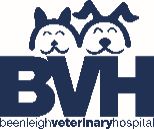Endoscopy
Endoscopy is a non invasive diagnostic tool used to examine the inside of your pet without the need for surgery. This procedure uses a tube with a video camera at one end. The tube is passed into the body through the mouth. The images from the camera are viewed by your veterinarian on a screen.
The term endoscopy refers to examination of the upper gastrointestinal tract. Other endoscopic procedures include bronchoscopy (airways), colonoscopy (rectum and lower digestive tract), rhinoscopy (nasal cavity), and arthroscopy (joint cavity).
There are two types of endoscope. A rigid endoscope is inflexible and is used for looking inside joints and the nasal cavity. The end of a flexible endoscope can be moved in different directions which makes it useful for examining the gastrointestinal tract. Some endoscopes have a separate channel so that forceps can be passed down the tube. Using the images on the screen for guidance, the forceps can be manipulated to perform minor procedures, collect biopsies, or remove foreign bodies.
Why does my pet need an endoscope?
There are several reasons why your veterinarian would recommend that your dog or cat have an endoscopy. Some of the most common include:
• To visualise the lining of the gastrointestinal tract and to take a biopsy if necessary. This can allow more accurate diagnosis of diseases such as stomach ulcers, cancer, or inflammatory bowel disease.
• To remove a foreign body from the upper airway or oesophagus
• To identify a reason for regurgitation such as areas of stricture (narrowing) of the intestines or oesophagus
• To help diagnose the cause of chronic vomiting or diarrhoea
The main advantage of using an endoscope to examine inside the body is that it is non-invasive. Your vet will be able to have a close look at the area of interest without surgery. Your pet will undergo a general anaesthetic for this procedure. This will prevent any movement which could injure them.
Are there any risks with pet endoscopy?
Complications from endoscopy are extremely rare. The main risk is perforation of the intestines or stomach during the procedure, but this is highly unlikely in the hands of an experienced Veterinarian.
The other potential source of side effects is the general anaesthesia. Anaesthesia is safe, but there is always the chance of an adverse reaction to the medication, or complications due to the combination of anaesthesia and ill health.
Your vet will only recommend endoscopy if they feel it will provide important information about your pet’s condition and will be helpful in treating them.
